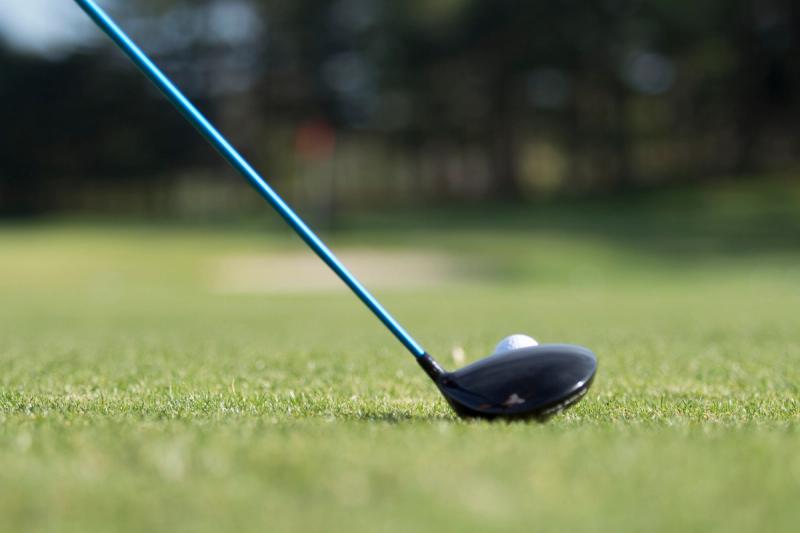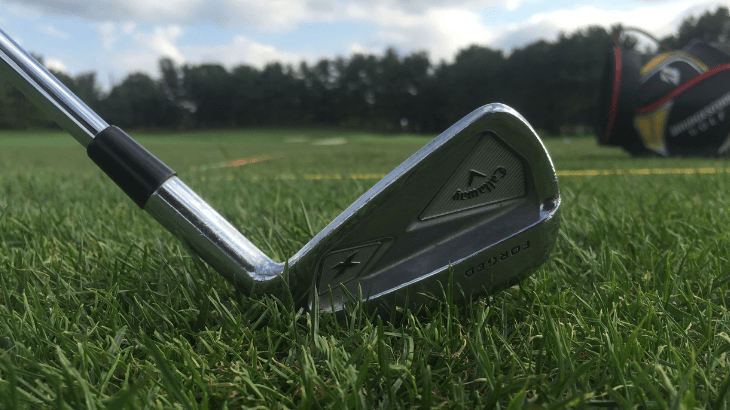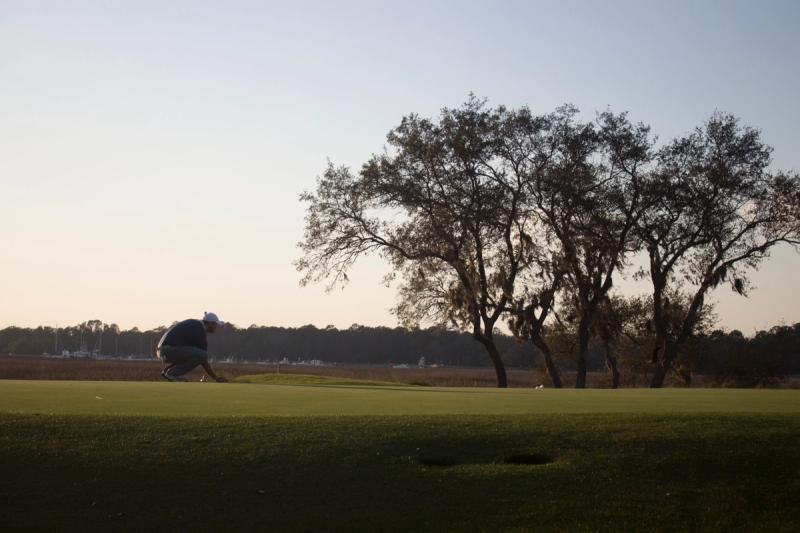Last Updated: Nov 03, 2023
What is Swing-Weighting in Golf?
Swing weighting can be an excellent way to turn your least favorite club into your favorite club.
Written By: Zach Gollwitzer
Posted in: DIY Clubmaking
Table of Contents


It often surprises me how little the average golfer knows about swing-weighting. It surprises me even more when I have to explain it to a scratch golfer. But hey, you don't have to know anything about your equipment to shoot 72.
As a perfectionist and control freak, I can't stand not knowing the precise lengths, weight distributions, etc. of my clubs. I can't say it's a great quality to have, but for the perfectionists out there, this page is for you.
Let me Start With a Loose Definition of "Swing-Weight."
From a subjective standpoint, swing weight is how the club "feels" in your hand. From an objective standpoint, swing weight can be measured on a scale from A0-G9, which I will explain in detail later in this post.
To get a sense of what I mean, try the following:
- Flip a golf club upside down, and swing it
- Swing two golf clubs at once normally
I think we all could predict how these two actions would feel, but as an illustration of a "technical" concept, I think it serves its purpose. When you swung the club upside down, you probably felt like your swing was extremely quick, and you had no sense of rhythm. When you swung two clubs at once normally, you probably felt a great sense of where the clubs were during all parts of the swing, but also probably didn't feel much power.
These lessons apply to your golf clubs! If you have too "heavy" of a swing weight, you might have an increased sense of the club-head during the swing, but lack the power necessary to return the club at impact squarely. If you have too "light" of a swing-weight, you might feel like the Hulk, but lack any regard to where the club-head is during different positions of the swing, which once again will limit your ability to return the club square at impact.
I've played my irons at swing-weights of C9 all the way up to D9 (there's a huge difference here- explained later on this page), and currently sit around D5, which is right in the middle. I found that when I had my irons at C9 (too light for me), I would over accelerate at the top of my swing with the upper body, and suffer from thin pulls. When I played my irons at D9 (too heavy for me), I felt like I was swinging a sledgehammer, and often my hands couldn't keep up with my lower body, causing pushes and fat shots.
So you know why you should find the correct swing-weight, but how does one go about doing this? Like always, I recommend some personal experimentation, but I also want to give a few pointers to get you started. The remainder of this page will briefly cover some of the topics found later in the clubmaking course.
Weight Adjustment Guidelines (Useful Reference)
Here are some useful conversions that will help you when swing-weighting your clubs:
Note: A 1 point increase in swing-weight points would be the equivalent of going from D1 to D2, while a 1 point decrease in swing-weight points would be the equivalent of going from D2-D1.
| Condition | Change in Swing-weight points (SW) |
|---|---|
| Cutting 1/2" off grip end of shaft | 3 SW decrease |
| Adding 2 grams to clubhead | 1 SW increase |
| Adding 5 grams to grip end of shaft | 1 SW decrease |
| 3 layers of masking buildup tape under grip | 1 SW (ex: 90 g shaft=1 SW more than 80 g shaft) |
| Flattening lie angle 4 degrees | 1 SW increase |
| Shaft weight difference of 9 grams | 1 SW decrease |
| 4.5 inches of normal 1/2 inch wide lead tape | 1 SW point or 2 grams |
| 3.15 inches of "high density" 1/2 inch wide lead tape | 1 SW point or 2 grams |
This table represents the general guidelines that I have followed for several years, but they aren't perfect. Always be sure to measure!
Swing-Weight "Language"
What does C9 mean? How about D9? There are some terms and concepts that you need to understand before proceeding.
Swing-weights are all based on a standardized scale, which looks like this. The scale in effect gives a "ratio" of head weight to butt weight. The heavier the clubhead is in comparison to the grip end of the club, the further down the alphabet your swing-weight will be. Most scales measure from A-G, although if you are using a club that measures in the range of A or G, you probably aren't playing very well at the moment;) Each letter has measurements from 0-9 (ex: D0-D9).
As a general guideline, most tour pros prefer their wedges to play around D6, their irons around D4, and their woods around D2. Don't quote me on that, but I think you'll find that these numbers are in the ballpark.
Now for the confusing part...
Swing-weight is not a measurement of total weight. You could have a 300 gram golf club that has a D4 swing-weight, and a 500 gram golf club that also has a D4 swing-weight. As mentioned before, swing-weight is a measurement of clubhead weight relative to the grip end of the club. This is important to keep in mind going forward!
Lets review...
- Swing-weight is universal, and is based on the comparative weights between the clubhead end of the club to the grip end of the club (D9 will "feel" heavy, while C9 will "feel" light)
- Swing-weights range from A0 to G9
- D0-D6 are probably the most common swing-weights (anything you buy at a golf store off the rack)
- Swing-weight is not a measurement of total club weight
Finding Your Optimal Swing-Weight
As I've said, experimentation is the best way to do this, but I would recommend starting with lead tape until you have determined a swing-weight that you prefer for different clubs. I recommend lead tape because it can be applied and removed quickly without taking apart the entire club.
There is no "standard" as to how you swing-weight your clubs, so it truly is up to you to figure that out!
Personally, I play my Driver and 3 wood at D3, my irons and hybrid at D5, and my wedges at D7. I love how this composition feels, and certainly have done my share of experimentation.
Measuring Swing-Weight
You can measure the swing-weight of your clubs through a mathematical formula in this Swing-weight DIY Calculator, or you can purchase a scale here.
If you purchase the scale in the previous link, this video explains how to use it:
Methods for Altering Swing-Weight
There are several ways that you can alter the swing-weight of a club. Each of these methods will have corresponding tutorials, so be sure to check them out!
I'm sure there are other ways you could alter the swing-weight, but these are the most common.
Summary
I know this might seem overwhelming to the newcomer, but I have plenty of tutorials regarding this topic, so work your way through them, and I promise everything will start to make more sense!
Quick review...
- Swing-weighting determines the "feel" of the club (does your club "feel" heavy, or light?)
- Swing-weight is based on a standardized scale of letters and numbers from A0-G9
- Swing-weight can be measured through an excel formula, or on a physical scale (probably more accurate)
- Finding your optimal swing weight should be done through experimentation with lead tape
- Use the table posted on this page as a reference. If you want to bookmark the table, I have created a separate page here for it.





